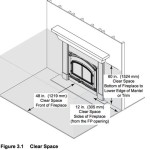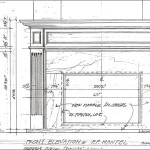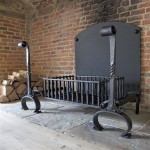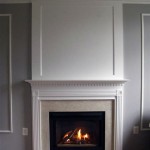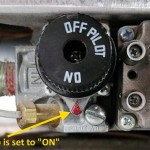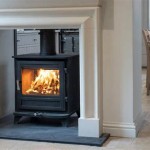Double Sided Wood Stove Fireplace Inserts: A Comprehensive Overview
Double sided wood stove fireplace inserts represent a unique and efficient heating solution for homes with open floor plans or those looking to create a visually striking centerpiece. Unlike traditional fireplace inserts that radiate heat from a single side, these units are designed with glass panels on both faces, allowing heat and the ambiance of a fire to be enjoyed from two adjacent rooms or areas. This design not only enhances heating capabilities but also adds an architectural element to the home, transforming a once-ordinary fireplace into a focal point.
The installation of a double sided wood stove fireplace insert requires careful planning and professional execution. Considerations must be given to structural supports, flue compatibility, and adequate clearances to combustible materials. These inserts are typically heavier than their single-sided counterparts, demanding robust fireplace construction or reinforcement to bear the weight. Furthermore, proper chimney lining is crucial for safe and efficient operation, ensuring proper draft and preventing the escape of harmful gases into the home.
The operational benefits of double sided wood stove fireplace inserts extend beyond their aesthetic appeal. They offer increased heating efficiency compared to open fireplaces, reducing heat loss up the chimney and providing more consistent warmth within the living space. The controlled combustion process within the stove minimizes emissions, making them a more environmentally friendly heating option than traditional wood-burning fireplaces. The increased fuel efficiency also translates to reduced wood consumption, saving homeowners money on heating costs over the long term.
Heating Efficiency and Distribution
The primary advantage of a double sided wood stove fireplace insert lies in its ability to efficiently heat two distinct areas. The design facilitates radiant heat transfer through both glass panels, allowing the warmth to spread evenly across the adjacent rooms. Convection systems, often incorporated into the insert design, further enhance heat distribution by circulating warm air throughout the space. This ensures that the heat is not concentrated solely around the fireplace itself but reaches farther into the rooms, providing a more comfortable and consistent temperature.
Several factors influence the heating efficiency of a double sided wood stove fireplace insert. The size and design of the firebox, the quality of the insulation, and the efficiency of the combustion process all play a role. High-quality inserts typically feature airtight construction and advanced combustion technologies, which promote complete burning of the wood and minimize heat loss. The type of wood burned also affects heating efficiency, with seasoned hardwoods generally providing more heat output than softwoods. The proper sizing of the insert to the space it is intended to heat is also crucial; an undersized insert will struggle to maintain a comfortable temperature, while an oversized insert may create an uncomfortable and inefficient heating experience.
Controlling the airflow within the insert is essential for optimizing heating efficiency. Most models feature adjustable air controls that allow users to regulate the rate of combustion and the intensity of the heat output. By carefully managing the airflow, homeowners can fine-tune the heating performance to match their specific needs and preferences. Overly aggressive airflow can lead to rapid burning and reduced heat output, while insufficient airflow can result in smoldering fires and increased smoke production. The optimal airflow setting will depend on the type of wood being burned, the desired heat output, and the draft conditions of the chimney.
Aesthetic and Architectural Considerations
Beyond its heating capabilities, a double sided wood stove fireplace insert serves as a striking architectural feature, adding visual interest and ambiance to the home. The ability to view the fire from two different perspectives creates a unique focal point, enhancing the aesthetic appeal of both spaces. The design can be seamlessly integrated into various architectural styles, from traditional to modern, complementing the existing décor and adding a touch of warmth and sophistication.
The design options for double sided wood stove fireplace inserts are diverse, ranging from sleek and minimalist models to more elaborate and ornate designs. The framing and finishing materials can be customized to match the surrounding décor, creating a cohesive and visually appealing look. Options include various metal finishes, stone surrounds, and custom-built mantels. The glass panels themselves can also be customized with different tints or textures, adding to the visual appeal and creating a unique ambiance.
Proper lighting can further enhance the aesthetic impact of a double sided wood stove fireplace insert. Recessed lighting above the insert can illuminate the surrounding area, highlighting the architectural details and creating a warm and inviting atmosphere. Accent lighting placed strategically around the fireplace can add depth and dimension, drawing attention to the flames and creating a focal point. The interplay of light and shadow can transform the fireplace into a work of art, adding a touch of elegance and sophistication to the home.
Installation and Safety
The installation of a double sided wood stove fireplace insert is a complex process that requires specialized knowledge and expertise. It is crucial to hire a qualified and experienced installer who is familiar with local building codes and regulations. The installation process typically involves several steps, including removing the existing fireplace damper, preparing the fireplace opening, installing a chimney liner, and connecting the insert to the venting system.
Proper chimney lining is essential for safe and efficient operation. The chimney liner provides a smooth and insulated pathway for the exhaust gases, preventing them from condensing and forming creosote, a highly flammable substance. The type of chimney liner used will depend on the specific model of the insert and the local building codes. Stainless steel liners are generally recommended for their durability and resistance to corrosion. The liner must be properly sized to ensure adequate draft and prevent the escape of harmful gases into the home.
Adequate clearances to combustible materials are critical for preventing fires. The manufacturer's installation instructions will specify the minimum clearances required around the insert and the chimney. These clearances must be strictly adhered to, as inadequate clearances can lead to overheating and potentially a fire. Heat shields can be used to reduce the required clearances in some cases, but they must be installed properly and in accordance with the manufacturer's instructions. Regular maintenance, including chimney cleaning and inspection, is crucial for ensuring the safe and efficient operation of the insert.

Double Sided Fireplace Insert 1050 Jetmaster Wood Burning

Double Sided Fireplace Insert 2 1 Rais Wood Burning

Double Sided Stoves 2024 The Ultimate Guide From Hot Box

Eureka Jewel Insert Double Sided Wood Fireplace Hawkesbury Heating

Fireplaceinsert Com Supreme Opus Double Sided Fireplace

View Our Range Of Double Sided Stoves

Double Sided Fireplace Insert NÉo 67 76 Vl1 D Supra France Wood Burning

Rais 500 2 Insert Wood Burning Two Sided Firebox Robey S

75s Ii Double Sided Fireplace Insert By Austroflamm

Osburn Everest 2 Zero Clearance Wood Stove Fireplace Fireplaces By Cameron

